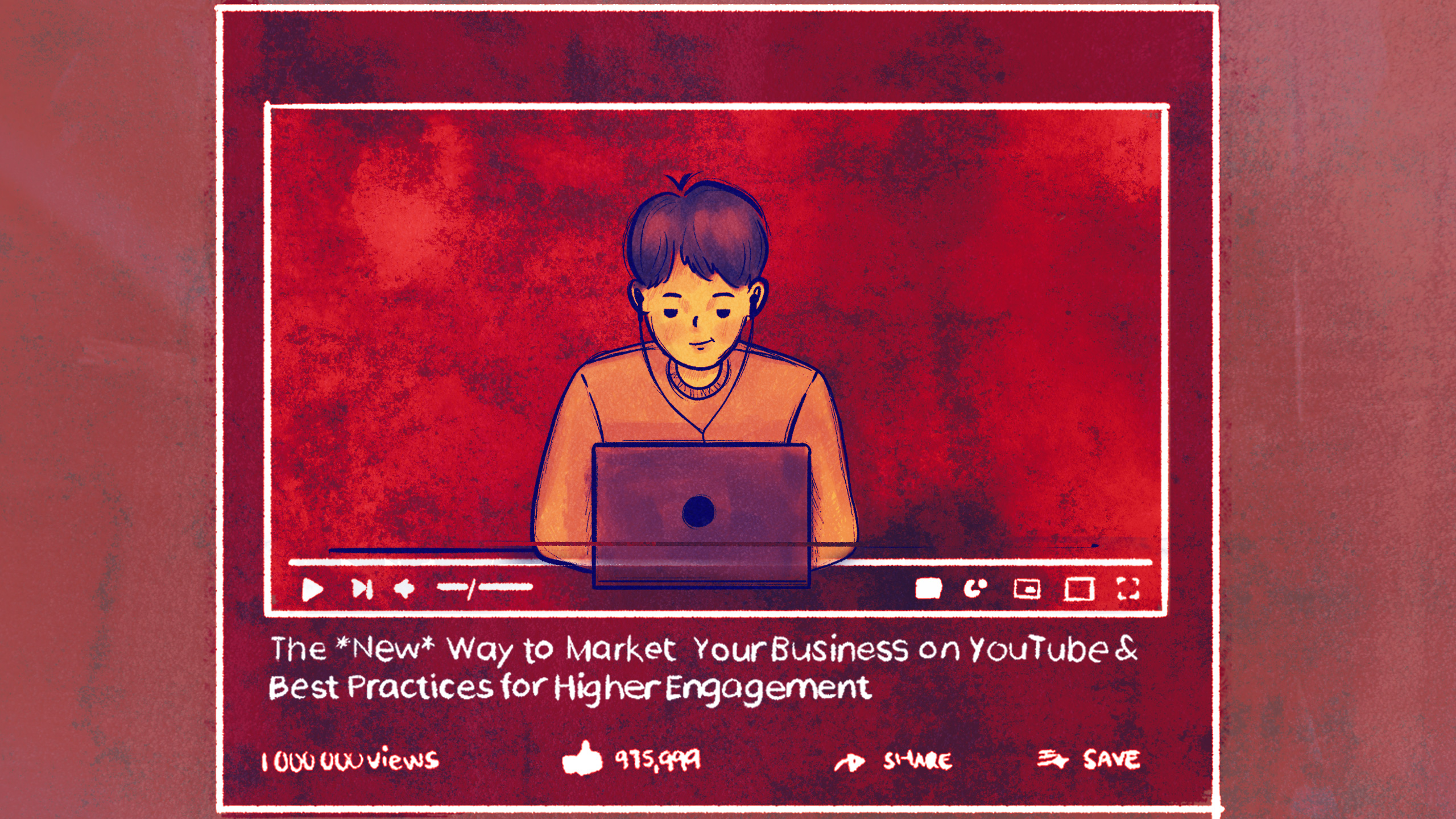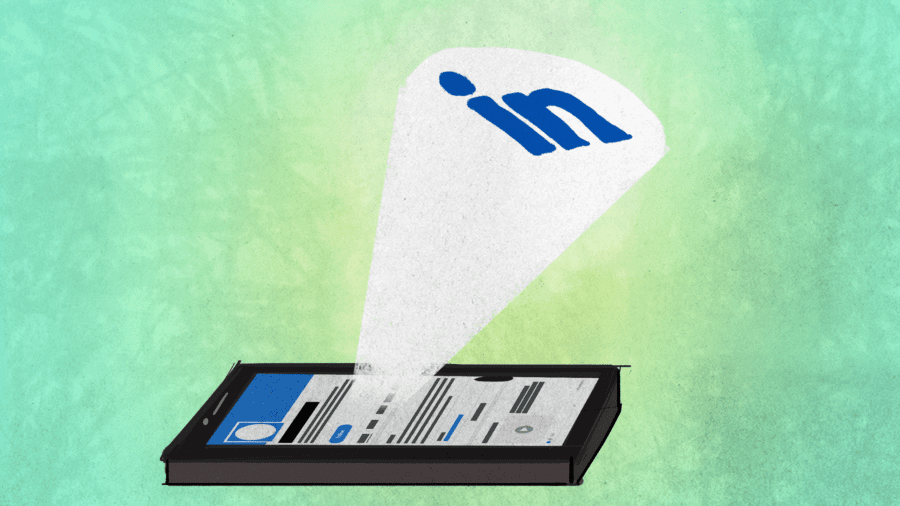
The *New* Way to Market Your Business on YouTube & Best Practices for Higher Engagement
Do you know how to expand your YouTube channel’s outreach to market your business?
Since it came on the scene in 2005, YouTube has become an invaluable marketing tool for businesses. Video marketing services as a whole are highly effective in generating sales and growing your client base, and YouTube is a free-to-use platform that reaches over 2.6 billion people, many of which may make up your target market segment.
The benefits of YouTube for businesses are immense, but simply posting on the platform and hoping for the best is not the best strategy for maximizing your page’s growth. Instead, you can use simple strategies to increase your engagement and subscribers, ultimately leading to more sales and clients.
One important note is that the best practices for YouTube and other online marketing resources, such as Instagram, Facebook, and TikTok, constantly evolve, so you need to keep up-to-date with each platform to optimize your business page’s growth.
In this article, you’ll learn the current best practices for effectively advertising your business on YouTube.
Creating the Perfect YouTube Channel for Your Business
The first step to marketing your business on YouTube is creating an optimal channel for your brand. You can create your channel through an existing Google account, but you should create it via an account you only use for your business — don’t use a personal Google account. This will save you some headaches in the future — you may need to share account information with others in your business.
When creating your account, you’ll want to fill out your business channel’s “About” section and link to your other social media accounts. Don’t skip out on writing a high-quality “About” section that describes what value you bring to your audience and your business’s mission statement. Your “About” description should pique the interest of your channel’s viewers, who may also become customers or clients.
For example, if your business is an accounting firm, you could describe your firm, its specialties, its mission statement, and what value your YouTube channel brings to others. Perhaps with your accounting knowledge, you can create videos about introductory bookkeeping or saving money. You deliver insider accounting knowledge to your viewers, and you can expand your brand and grow your client base by attracting new customers via your YouTube channel.
Your “About” description should also include important keywords for the services you provide (“accounting for small businesses”) and your location (“Jacksonville, Florida”). That way, your business is more likely to appear in YouTube and Google searches.
In addition to including an exceptional “About” section, you’ll also want to include an attention-grabbing header image and a profile picture. You can also use these images to arouse viewers’ interest and express what your YouTube channel provides, such as non-official accounting advice.
Finally, you’ll want to include a trailer that automatically plays when someone visits your YouTube channel. Your trailer can give your audience a brief look into the type of content you produce and an overall summary of your channel. Including a channel trailer will greatly increase the likelihood that viewers will watch your other videos because they’ll know what to expect and what value your channel provides, whether entertainment or education.
Research Other YouTube Channels
After creating your YouTube page, you need to determine what kinds of content your business will provide viewers. Eventually, you’ll gain a clearer picture of what kinds of content excels by researching your audience and your video statistics, but when starting from scratch, you can get content ideas from competitor channels and popular channels.
You can study successful business channels that provide similar services as your own company. You’ll learn a great deal about these successful competitor channels by considering their video subjects, quality, comments, and how frequently they post. You should also consider which videos have the most views and engagement, and you can utilize this information to craft your own video marketing strategy.
For example, if you view a competitor accounting firm’s YouTube channel and notice that their most popular videos include titles such as “10 Ways to Streamline Your Bookkeeping” and “8 Common Tax Filing Mistakes,” you’ll learn that list-styled educational videos attract more viewers.
In addition to viewing successful channels from potential competitors, you can learn a great deal from popular channels. When you take time to watch YouTube videos, you’ll notice what it is about other channels that attract your attention and keep you watching. Perhaps it’s the YouTube channel’s video thumbnails that catch your eye, or maybe you enjoy videos with higher-quality production and better video editing.
When you take the time to research and discover what people enjoy on YouTube, you’ll have a clearer picture of what content your business should produce to attract subscribers and grow your brand.
Join In 200 Million+ On The Journey to Greatness
Deliver Good-Quality Content
Now that you have an idea of what kinds of content to create, it’s time to make videos. There’s a common misconception that a YouTube video going viral is purely based on luck and is out of your control, but that’s simply not the case — you can optimize your videos to increase your likelihood of going viral.
Perhaps the most critical part of going viral is making a good-quality video. This doesn’t necessarily mean that your video needs to be shot in 4K or feature professional visual effects, but you should avoid putting out a low-quality video, and this is especially important when it comes to your audio quality.
Have you ever watched a video with such poor audio quality that you couldn’t hear the video’s subject? How long did you keep watching the video?
Poor quality audio will significantly increase the likelihood of people clicking away, indicating to the YouTube algorithm that people do not enjoy your video. You need to put out videos with decent audio and visual quality to keep viewers watching.
Another great way to keep viewers watching your videos is by providing chapters. Many are under the misconception that supplying video chapters will encourage viewers to skip around and not watch your full video, but in reality, chapters will make your video more accessible for viewers and will increase the likelihood of them watching more of it.
Incorporate Keywords, Video Descriptions, and Other Details to Optimize Your View Count
Your videos need more than just good quality — they also need searchable keywords that appear in the title, description, and tags. You can find common YouTube keywords by searching for your topic in the search bar. This will bring up common searches that indicate what real people are looking for in relation to your topic.
For example, if you type “marketing” in the YouTube search bar, “marketing strategies for small business” may appear. This indicates that those searching for “marketing” are also searching for the keywords “strategies for small business,” so you can incorporate these keywords into your title, description, and tags to increase the likelihood of your videos appearing in viewers’ search results.
Your video description should also include your website, social media accounts, links to your products or services, and a call to action to engage with your content. If you spend much time watching YouTubers, you’ll likely notice that they often request their viewers to “like” and “subscribe,” and they also often include this request in their descriptions. Simply asking viewers to like and subscribe is highly effective for increasing engagement and gaining more subscribers. With more engagement, YouTube is more likely to recommend your videos to more potential subscribers.
You can also enhance your chances of increasing your view count by creating quality YouTube thumbnails that catch people’s attention.
Finally, your videos should include info cards and end screens that encourage viewers to subscribe and click on some of your other videos. This will increase your chances of viewers becoming subscribers and engaging with your other content.
Creating a YouTube Marketing Strategy with Different Kinds of Content
It’s essential to recognize that YouTube now features more types of content than standard videos — the site now has YouTube Stories and YouTube Shorts.
YouTube Stories work similarly to Instagram and Facebook Stories — creators upload a temporary video that people can access by clicking on their profile pictures. The major difference between YouTube Stories and other social media platforms is that the story remains available for a week rather than 24 hours, and YouTube Stories are only 15 seconds long. Subscribers can only access YouTube Stories via the mobile application, and the videos are in a 9×16 aspect ratio rather than the standard YouTube aspect ratio of 16×9.
YouTube Stories allow your business to produce more straightforward content without the time and effort that goes into producing standard YouTube videos. Additionally, you can use your YouTube Stories as an opportunity to address any comments or questions your viewers leave on your channel’s videos, allowing you to engage with your audience. Unfortunately, at this time, YouTube Stories are only available for channels that have over 10,000 subscribers, so you’ll need to grow your channel beforehand.
Unlike YouTube Stories, YouTube Shorts doesn’t require your business to have a minimum number of subscribers. These videos are also in the 9×16 ratio, and you can post up to a 60-second YouTube Short. Like with Stories, YouTube Shorts typically don’t require as much effort to produce content, and you can film and upload content directly from the convenience of your phone.
When you post YouTube Shorts, YouTube will share it with viewers in the YouTube Shorts tab, where you can attract more subscribers.
As you begin creating different types of content, you’ll want to organize your different videos on your profile by using video shelves. For example, if you produce YouTube Shorts, educational content, and behind-the-scenes videos, you can separate the different types of content in your video shelves. This will allow those visiting your YouTube channel to navigate your different content types quickly.
Research and Connect with Your Audience
Once you begin growing your channel and attracting viewers and subscribers, you can research your audience to determine what kinds of content you should make going forward.
You can begin researching who watches your videos by viewing your YouTube Analytics, a tab available in your YouTube Studio. This will reveal the demographics of your audience members and their interests. You’ll also be able to see whether people discover your videos through the YouTube search bar, in their suggestions, or elsewhere.
Once you gain a clearer understanding of your audience, you can craft your content around what they want in order to increase viewership and engagement.
You may also want to consider whether you’re reaching your target audience. Let’s say your company is an accounting firm that works with small businesses. You would likely want to target domestic entrepreneurs and small business owners because you’re trying to grow your brand and client base. If you discover that your subscribers are primarily 15 to 17-year-olds, you’re likely not reaching your target audience because your viewers do not need your services.
Of course, there are inherent benefits to growing a YouTube channel regardless of business marketing, such as ad revenue and brand awareness, but you would likely want to shift your content to target those who are more likely to hire your firm.
You should also focus on reaching out to your community in order to build connections with potential customers or clients. Make sure you always engage with your viewers and respond to all comments on your videos. You can also communicate with them directly via the YouTube Community Tab, but you’ll first need 500 subscribers.
Once you gain access to this tab, you’ll be able to use it like a standard social media feed, such as Facebook or Instagram, but you post pictures and updates for your YouTube subscribers. This is a great way to connect with your audience directly.
You can also start polls and ask your subscribers what they want to see on your channel to increase engagement further and build professional relationships.
Learn More Tips for Optimizing Your Business Marketing
Although we covered many ways to grow your YouTube channel and community today, there are still many more tools and practices you can use to optimize your growth. Fortunately, you can check out many great YouTube growth strategies on websites including Hootsuite, vidIQ, and WordStream. You can also check out other exceptional tools for marketing your business on Greatness.com.
One final note we’d like to leave is that growing your brand and business on YouTube and other social media and video platforms requires consistency. Posting regularly is crucial for growing your online presence and enhancing brand awareness, and this will help you close more sales and gain more clients.
Growing a YouTube channel can take hard work and perseverance, but you have what it takes to expand your business through this invaluable platform!
Greatness Authors
Greatness Authors is a collection of writers, thinkers, curiosity experts, and students of the world who are committed to bringing you the most up-to-date, impactful, and inspiring information surrounding Greatness topics.

15 Insightful Questions to Ask at Your Next Networking Event That Will Boost Your Credibility

9 Signs You Have Imposter Syndrome at Work and How to Overcome Performance Insecurity

The Young Professional’s Guide to Advocating for Yourself at Work & Setting Healthy Boundaries

A Beginner’s Guide to Amplifying Your Personal Brand on LinkedIn Using Creator Mode

Women & Business: 13 Eye-Opening Statistics That Prove We Need More Women in Executive Roles










